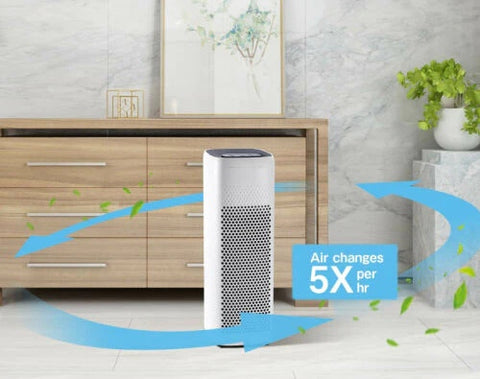No products in the cart.
Purifier
How to Determine If Your Air Purifier Is Working – 7 Practical Ways
Advertisement
Are you wondering if your air purifier is actually doing its job? In this article, we will explore seven practical ways to determine if your air purifier is working effectively. Whether you want to ensure that your air purifier is functioning optimally or troubleshoot any issues, these tips will provide you with the knowledge and tools you need. Let’s dive in and find out the answers to your questions and more.
1. Visual Indicators – Check the Indicator Lights and Data Display
Start by checking the visual indicators of your air purifier. Look for illuminated lights that indicate the device is powered on and functioning correctly. Additionally, most air purifiers are equipped with display screens that show values for PM2.5, formaldehyde, and VOC content. By monitoring these changes in the data, you can assess the effectiveness of the purifier.

2. Air Quality Monitoring – Professional Testing Equipment for AQI
Consider using professional air quality monitoring equipment for a more comprehensive assessment. These devices measure various pollutants and provide an Air Quality Index (AQI) that indicates the overall air quality level. Compare the readings with and without the air purifier operating to determine its effectiveness in reducing pollutant concentrations.
3. Chemical Test Kits – Checking for Common Indoor Pollutants
Use chemical test kits to check for common indoor pollutants. These kits typically include test strips or solutions that react to specific contaminants like formaldehyde, VOCs, or mold. By comparing the results from different areas of your home, you can assess the purifier’s performance in reducing the presence of these pollutants.
4. Odor and Allergen Reduction – Breathing Becomes Easier
A reliable air purifier should noticeably reduce odors and allergens in your living space. Pay attention to any changes in air quality and observe if there is a decrease in unwanted smells or a reduction in allergic reactions. These improvements indicate that your air purifier is effectively removing airborne particles, making the air easier and more pleasant to breathe.
5. Airflow and Ventilation – Testing Your Air Purifier’s Performance
Assess the airflow and ventilation of your air purifier by placing your hand near the purifier’s outlet. Feel for steady and strong airflow, as weak or limited airflow may indicate issues with the fan or filters. Additionally, ensure proper room ventilation to allow the air purifier to circulate and purify the air more efficiently.
Advertisement
6. Noise Level – Assessing the Sound Output of Your Air Purifier
Assess the noise level of your air purifier to determine its effectiveness. While air purifiers generate some sound due to the fan, excessive or unusual noise could signify a problem. Expect a steady and consistent sound when the purifier is operating properly. Excessive noise or unusual sounds may indicate a malfunctioning component that requires maintenance or repair.
If you want to learn more about the different noises that air purifiers make and how to fix them, please click: Why Is My Air Purifier Making Noise So Loud: Causes and Solutions.
7. Regular Air Filter Checks – Is There Any Interception in the Filter
Regularly check the air filters in your air purifier to ensure their effectiveness. Filters trap and remove airborne particles and pollutants from the air, but they can become clogged over time. Inspect the filters for visible signs of interception, such as accumulated dust, dirt, or debris. Cleaning or replacing the filters according to the manufacturer’s instructions will ensure that your air purifier consistently removes pollutants and maintains clean indoor air.

FAQs
Q: How often should I check or replace the filters in my air purifier?
A: It is recommended to check the filters every few months and clean or replace them as needed. Refer to the manufacturer’s instructions for specific guidance.
Q: Can I use my air purifier in multiple rooms?
A: Air purifiers are designed to be portable and can be used in multiple rooms. However, consider the size of the room and the purifier’s coverage area to ensure optimal performance.
Q: Are air purifiers noisy?
A: Air purifiers generate some sound due to the fan, but the noise level varies depending on the model. Many purifiers have noise level settings that allow you to adjust the fan speed and noise output.
Conclusion
Understanding the effectiveness of your air purifier and ensuring it is working optimally is vital for maintaining clean and healthy indoor air. By visually inspecting your purifier, monitoring air quality, addressing odor and allergen reduction, using chemical test kits, testing airflow and noise, and checking filters, you can determine if your air purifier is working effectively. Remember, when used correctly, air purifiers are highly effective in filtering pollutants and improving air quality.
For quality air purifiers that meet safety, performance, and emissions standards, visit Airisy. Their CALIFORNIA AIR RESOURCES BOARD, ETL, FCC, RoHS, CARB, and CE-certified air purifiers ensure top-notch quality and performance.
Advertisement


